“Serving both the Southern and the 3 C’s Railroads.”
The Yorkville Enquirer reported on April 28, 1870 – “A meeting of the stock holders of the Charlotte, Augusta and Columbia RR was held recently in Augusta. Board members from S.C. are: Lexington Co., – Paul Quattlebaum, Richland Co., – C.D. Melton, John Fisher, Edward Hope, and F.W. McMaster, Fairfield Co. – J.H. Rion, W.R. Robertson, Chester Co. – G.J. Patterson, J.J. McClure, York Co. – A. B. Springs.”
The Rock Hill Herald reported on July 29, 1880 – “The building for the CC&A ticket office has been enlarged. Two rooms have been added, one for passengers and another for baggage.”
The Herald reported on May 14, 1885 – “Mr. Westerlund has the contract to put a new roof on the depot.” The YK Enquirer reported on Nov. 5, 1885 – “Mr. William Dillingham has taken charge of the Greenville and Columbia railroad’s telegraph and ticket offices. He is a northerner who came to Rock Hill from Ogdensburg, NY in 1870 with the Western Union Co., and later went to work for the Southern Telegraph Company.”
The Herald reported on Feb. 11, 1886 – “A meeting was held in Rock Hill about the route of the 3C’s railroad. A committee of ten was appointed to develop a petition to ask the county to hold an election to authorize a bond issue of $75,000. The Mass. and Southern Construction Company is now surveying for potential routes. The county commission has already authorized a vote for March 15, for a bond in York Township.” On May 20, 1886 the Herald reported, “The surveying crew for the 3C’s RR is about to complete their work between Lancaster and Rock Hill.”
The Herald on March 31, 1887 reported – “Mrs. M.J. Morrison, until lately the proprietor of the Globe Hotel, has opened a boarding house on Main Street a short distance NW of the Depot.”
The Herald reported on June 23, 1887 – “About three miles of the line of the 3C’s railroad has been staked out between Rock Hill and the River and is ready for the contractors.”
The Yorkville Enquirer reported on Feb. 29, 1888 – “Two hundred sixteen wheelbarrows were received here last Saturday to be used by contractors in this area in grading the 3C’s railroad.” Later on Dec. 19, 1888 the paper reported, “The telegraph wires of the 3C’s Railroad have reached Rock Hill and an office has been opened in the passenger depot.”
CCC Railroad: August 8, 1888: The Three C’s Railroad is progressing. Trestle # 13, located about three miles
from the Catawba River trestle, was finished last Thursday and the track is now laid to within the corporate limits of Rock Hill.
City Directories and History: 1913 – Ernest J. Ballard, telegraph opr. Southern Railroad,
From time immemorial there had been a rocky knoll, the most remarkable feature in an otherwise undistinguished landscape, situated
several miles east of what was known in the first half of the nineteenth century as the village of Ebenezerville, which consisted of ten or twelve

Mrs. Katherine Hoke, a third grade teacher at WTS often escorted her classes at graduation time to ride on the train from Rock Hill to Chester or vice versa. Pictured here is the 1952 class, on their way to Chester, S.C. by bus and returning via the train. Courtesy of the Mandy Blackman Collection – 2017
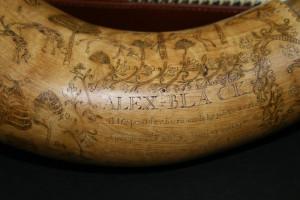
Early powder horn belonging to the Black Family – Courtesy AFLLC
houses, several general stores, and a Presbyterian church, all strung out along a dusty stretch of the Upper Land’s-ford Road. When surveyors charged with laying out a route for the projected rail line from Charlotte to Columbia came to the area of Ebenezerville in the late 1840’s, they took note of this well-known rocky knoll that was to play a part in the history of the future city of Rock Hill; and they soon learned that the country gentry who lived in the vicinity of Ebenezerville were not solicitous of having a railroad built through their Presbyterian enclave.
Accordingly, the surveyors chose a site for “the Ebenezer depot” that was two and one fourth miles east of the village itself. As it turned out, the spot was situated at the base of the rocky knoll aforesaid. The surveyors fulfilled the instructions given them by the owners of the railroad company to provide a depot for the Ebenezerville neighborhood, and at the same time they

Prior to the railroad coming to Rock Hill in 1850, Geo. P. White often shopped at the Fewell’s Store in Ebenezer.
placed the depot where the local landowners supported the coming of the Iron Horse and were willing to provide the six acres needed for a depot lot. (We might just as well call it “a warehouse lot,” because this first railroad depot was nothing more than a community storehouse for produce and shipped goods. No provision was made for passengers. At least one early plat of the immediate area called the building a “Ware House.”)
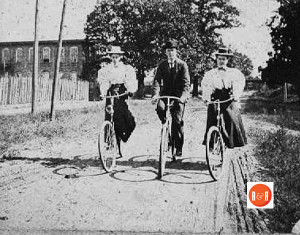
Cycling along Chatham Avenue near the Depot. Courtesy of the White – Presto Collection, Pettus Archives Collection at Winthrop University.
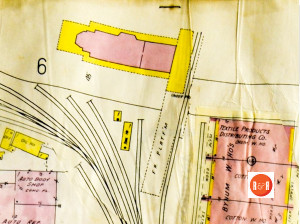
Sanborn Insurance Map of the subject, 1926 – 1959. Courtesy of the Galloway Map Collection.
The portion of the depot lot conveyed by A. T. Black measured 317’ by 500’ by 310’ by approximately 500’. The two longer sides paralleled the rail line. The lot was situated on the western side of the railroad. On February 14, 1853, Mrs. Ann Hutchison White deeded two acres to the C. & S. C. R. R. Company for use as a depot lot. The metes and bounds of the land are not set out in the deed. The document states that the land in question is “a portion of the lot upon which the Ebenezer or Rock Hill Depot is located.” We see from the above that the Company acquired one third of the depot lot (2 acres) from Mrs. White and two thirds from A. T. Black, (4 acres).
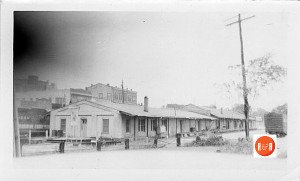
Rock Hill’s Cotton – Freight shipping platform. Courtesy of the Azer Collection – WU Pettus Archives Collection
The author has seen a plat of the depot lot which showed that the depot was built entirely on A. T. Black’s land. He has also seen a plat, perhaps two plats, showing the structure entirely on Mrs. White’s land. And he has seen a plat that showed the building on both Black land and White land. The last attribution seems the most plausible. Barring the discovery of an authenticated contemporary plat of the depot lot, we may never be absolutely certain of the precise spot whereon the first railroad depot was built.
The Yorkville Enquirer reported on June 15, 1871 – “During a recent storm, Mr. Dillingham, the telegraphic operator at Rock Hill was struck by lightening. The current struck his right side as he sat at the table, and passed through his right leg. The skin was broken in several places, his pants and shoes were ripped and he was paralyzed and speechless for a time. He has since fully recovered.”
The Rock Hill Herald reported on April 10, 1884 – “The Rock Hill Railroad Depot burned last week. The fire began in some cotton on the ground and spread to the depot, destroying it. It is planned that a new brick depot will be erected. Later on May 8, 1884 the paper reported – “Mr. Thomas C. Bernard, Civil Engineer for the CCA railroad, surveyed the site for the new passenger depot in Rock Hill last week. It will be located on Main Street Street on the East Side of the railroad opposite Capt. J.C. Sharp’s establishment. (It will be of wood and will be framed up in the railroad shop and shipped to Rock Hill.)*** The site of the freight depot will be determined next week.” R&R does not agree with this information, it changed in July.
The Yorkville Enquirer also reported on April 10 – “The freight depot, passenger depot, and cotton platform and 100 bales of cotton were destroyed by fire. The fire started in the fright depot then crossed the tracks to the passenger depot. The cotton burned belonged to Col. J.M. Ivy. The total loss is about $10,000.”
The Yorkville Enquirer reported on Nov. 12, 1885 – “William Dillingham has resigned as town treasure and secretary of Rock Hill. B.M. Fewell was elected to fill his unexpired term.”
The Yorkville Enquirer reported on Dec. 24, 1885 – “Sam Gill has been detained since Dec. 4, as a witness against Mack Barnett who, was charged with the burning of the RH Depot in March of 1884. Gill was detained as a witness who had evidence against Barnett but it has now been determined that the evidence in insufficient to bring charges.”
The Herald reported on Oct. 6, 1887 – “Mr. William Dillingham has returned to Rock Hill and is now in charge of the railroad office.”

Note the location is printed as the Rockhill Depot in 1855. Courtesy of the White Family Collection – 2008
Another crucial factor involved in choosing this site for the Ebenezer, or Rock Hill, depot was its location in relation to the two main public roads in the vicinity of the rail line that passed through the lands of A. T. Black and Mrs. Ann H. White. The Upper Land’s-ford Road, from Land’s-ford in Chester County to Yorkville, passed several hundred yards to the north of the depot site. Today’s Rock Hillians would know the modern street that corresponds to the old road as Charlotte Avenue. The other public road (dating back well before 1830) ran originally from what is now the intersection of East White Street and Confederate Avenue in a westward direction through what became the downtown area of Rock Hill (about midway between East Main and East White streets), across the railroad at the point where Black Street originally crossed the railroad, following West Black Street to the intersection with Allen Street, thence with Allen toward present-day York (the last part of the route being known in the 1920’s until the 1950’s as – the old York road”).

An 1852 route map showing the site of the battle of “Huck’s Defeat” and the area removed from York County to help in creating the new Cherokee County. It however does not show Rock Hill or the railroad which would soon put it on the map commercially. Courtesy of the AFLLC Collection
An examination of a map of the central area of Rock Hill in the antebellum period shows that the spot chosen for the railroad depot, or warehouse, was about midway of the two roads, cited above. As we shall see in the next chapter, the western terminus on Main Street as laid out in 1851 by ‘Squire’ John Roddey was located at the railroad right of way. The railroad at that point passed through a deep cut, a cut that had to be blasted through flint rock with gunpowder. This “rocky hill” (the rocky knoll) through which the railroad had to pass was the same which gave its name to the depot and then to the future town and city of Rock Hill, as we shall see. The only two grade crossings of the railroad in the 1850’s were located where today’s White Street and Black Street cross the rail line, Black Street being the better of the two crossings. There was enough of an incline at White Street to upset heavily loaded wagons in the early days of the community. In the years from 1852 to 1858-59 the passenger trains always stopped at what came to be called “the Black Street crossing,” not at the depot, or warehouse, which was located some hundreds of feet farther north.
The choice of the depot site seemed reasonable, since as stated above, the structure was built at a place that was convenient to both the main public roads, chiefly the Upper Land’s-ford Road. Not long after the depot was built and trains began to arrive there, a wagon road was made to connect the Land’s-ford Road (Charlotte Avenue) directly to the depot lot. This “unofficial” road (which ultimately became Chatham Avenue and passed over the lands of J. Lawrence Moore) became the shortcut used by travelers and local farmers coming south on the Land’s-ford Road from the direction of Ebenezerville and the Nation Ford.
While the depot site may have served the public reasonably well, it was certainly not an ideal spot for building purposes. The Rev. James Spratt White, son of Mrs. Ann H. White, wrote in 1884 that the place where the depot stood “was in former times a pond of water every winter from one to two feet deep.” He went on to say that “the lands immediately around this spot were in woods [that] belonged to George P. White and A. T. Black.” The writer has been told that the area was fed by a number of springs. If we are to believe local talk, we learn that in the basement of the 1912 railroad station there were several pumps in constant operation taking out the spring water that was still flowing at that spot as late as the 1970’s. It is likely that the water is today piped away into a city storm drain.
As noted above, the depot, or warehouse, as constructed in 1851 on wood pilings, had no space designated for passengers. Commercial concerns dictated the original design of the little structure, but public pressure on the railroad officials forced a re-thinking of the situation in 1858-59. The Company then remodeled the original depot, adding rooms for the telegraph office, for passengers, and for storing shipped goods and baggage. The remodeled “station” served well for a quarter of a century. In 1884 this structure was destroyed by a fire that was started among a lot of cotton bales stored on the platform of the freight office.
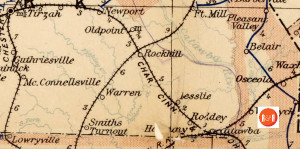
Postal map showing Rock Hill as a transportation hub on two railroads in 1896. Courtesy of the Un. of NC
According to the recollections of the Rev. J. Spratt White, the first passenger train arrived (from the south) at Rock Hill in June, 1852. A careful examination of the evidence, however, reveals that the correct date was probably March 23, 1852. The coming of this train signaled the completion of the rail line from Columbia to the depot called variously “Ebenezer Depot” and “Rock Hill,” and it also called for a permanent name for the depot. The “credit” for naming the depot “Rock Hill” is usually given to J. Lawrence Moore and Col. Edward Avery.
The Yorkville Enquirer reported on April 4, 1888 – “In Rock Hill the Charlotte Augusta and Columbia Railroad has begun a suit to prevent the 3 C’s Railroad from building a bridge over their line.” On Aug. 17, 1888 the Rock Hill Herald reported – “Tract laying has been completed on the 3C’s railroad in Rock Hill and on last Friday, Aug. 11, at 10:40 that morning the first train crossed the trestle over the CCA railroad in downtown Rock Hill. The rails will be ready for inspection by the railroad commission within a few days and it is expected that passenger service will begin on Aug. 22.”
The CCC Depot which was at a different “unknown” location. The Herald reported Nov. 29, 1888 – “That the CCC’s passenger trains are now receiving and discharging passengers at the new depot which was the former ——–‘s residence. The new depot building will be built as rapidly as possible and should be ready within two weeks. A large cotton platform is also nearing completion.”
The Herald reported on Aug. 23, 1888 – “An excursion train from Charleston to Rock Hill arrives today to celebrate the opening of the 3C’s railroad. It includes dignitaries and merchants representing Charleston and will make stops in Camden and Lancaster. Last Monday, a group of 125 people used the railroad for an excursion from Rock Hill to Lancaster.” Later on Aug. 30 the paper reported – “The track laying on the 3C’s has now reached about nine miles west of Rock Hill and is expected to be in Yorkville by Saturday.”
On Oct. 18, 1888 the Herald reported – “The 3C’s railroad has secured a lot for a depot in Rock Hill. Last Monday the company purchased the house and lot on White Street belonging to Mrs. W.L. Roach on the opposite site of the CCA Railroad from the Rock Hill Factory. The lot is 1.5 acres and the house is two stories. The price was $3,000. The dwelling maybe moved to one end of the property to be used as offices and a new depot built behind it. The railroad has a new large forty ton coal burning engine named The Lancaster, which made its first trip to Rock Hill recently. They also have engines named the Kershaw and the York.” On Nov. 1, 1888 the paper also stated – “The 3C’s railroad will use the Roach dwelling as the passenger depot and will build a new freight depot-office.”
The Herald reported on Jan. 3, 1889 – “The first regular passenger train on the 3 CCC Railroad went through Blacksburg on Thursday of last week. When the train arrived, it was greeted with a large concourse of people, bands, and the bursting of fireworks. All trains now run regularly from Camden to Blacksburg, at which point passengers can connect to the airline railroad for Shelby and Rutherfordton. This has brought the remotest sections of the county together.”
“The standing of the merchants is high. They are all prosperous and are the very bone and sinew of this land. The amount of annual business being done in banking, manufacturing, general business, and cotton amounts to at least $1,500,000. A well-known merchant has an estimate, which I here make use of to show what a very large sum of money is invested here. At the present time there is invested in taxable property about $1,335,000, in general business $200,000, in banking concerns $215,000, in manufactures $400,000; amount of general business transacted about $950,000; amount of cotton and manufacturing business done yearly about $1,450,000.” Reprinted from South Carolina in the 1880s: A Gazetteer by J.H. Moore, Sandlapper Publishing Company – 1989
The Herald reported on Jan 10, 1889 – “The CC and A railroad has put an addition of about 300 ft., of side track northeast of the passenger depot.”
The Herald reported on March 28, 1889 – “The CC and A railroad authorities have been petitioned to remove the shanties on their right of way, opposite the depot. These are unsightly buildings and the railroad authorities should not refuse to remove them.”
The Yorkville Enquirer reported on Aug. 26, 1891 – “Listed assessments of railroad property released by the State Board: Charleston – Cincinnati – Chicago have a total of 60.5 miles, the Atlanta Charlotte and Airline has 8.6 miles, and the George, Carolina and Northern has 8.4 miles, the Chester and Lenior has 26.6 miles and the Charlotte, Columbia and Augusta has 24 miles.” Also on this date: “A passenger train on the CC and A Railroad broke the record for the fastest trip between Charlotte and Columbia last Sunday. The trip, a distance of 107 miles was made in two hours and fifty seven minutes.”
The Rock Hill Herald reported on Jan. 4, 1893 – “The old platform has been removed at the 3C’s Depot and the yard is being covered with sand.”
The Herald reported on Oct. 24, 1896 – “Five trains passed the Southern Depot within an hour on Thursday night. Four were passenger trains and one was a freight.” Also, “The State railroad Commission met in Rock Hill on Thursday and agreed the City needs better passenger depots. The Southern Railroad has agreed to build a handsome depot on the Northeast corner of Railroad Ave., and Whites Street to cost between $3,000. and $3,500. The OR and C (formerly the CCC), will build a station just across the street. There is no agreement on building a Union Station.”
The Herald reported on Oct. 31, 1896 – “Southern Railroad officials came to look at the site of a new depot, it will be 110 – 60 feet. It will include three rooms, two waiting rooms and an office. It will be connected by an open passageway to express and baggage rooms. Construction will be of wood.”
The Herald reported on Nov., 7, 1896 – “The new Southern Depot will require moving the streetcar line and changing the grade of the track so it can pass safely under the OR and C bridge.”
The Herald reported on Sept. 1, 1897 – “That A.G. Owens of Owens, Ms., is visiting Rock Hill. He left town in 1859. He says, “at that time there was a log house for a hotel, one bar room, and only one or two residences in the neighborhood of the railroad station.”
Rock Hill Herald, October 18, 1888: The Three C’s Railroad bought the house and lot of Mrs.
W. L. Roach on October 15, 1888 for the purpose of placing their depot. The site has about 1 ¾
acres on White Street on the opposite side of the CC&A Railroad from the Rock Hill Cotton
Factory. The price was $3,000. The house is a two-story house and it may be moved on the site
and used as offices.The Herald reported on Sept. 4, 1901 – “That the SC and G Company (formerly the CCC’s Railroad), is preparing to build and new trestle over the Southern Railroad near the depot in this city. The present trestle was erected when the railroad was built thirteen years ago.”
The Herald reported on April 12, 1902 – “A large number of citizens gathered at the depot on Thursday night to see Pres. Roosevelt. However, the train did not stop. The President waved his handkerchief and bowed to the crowd as he passed.”
The Herald reported on May 28, 1902 – “The Herald has been told that the Southern Railroad will acquire the SGAG railroad (CCC’s), about the first of July.”
The Herald reported on March 25, 1903 – “Discussion has been going on for some time about building a bridge on Main Street over the Southern Railroad for the passage of vehicles and pedestrians. A representative from the railroad has surveyed the site and determined that this would be impractical due to the topography.”
The RH Record reported on June 20, 1907 – “The old Engine House, which stood on Railroad Ave., is partly torn down and will shortly be a thing of the past.”
The RH Record reported on May 28, 1908 – “A join meeting of the City Council and the Executive Committee of the Chamber of Commerce voted to ask the state railroad commission to have the Southern Railroad build a double – deck depot in Rock Hill at the point where the 3CCC’s road now crosses the main line of the Southern Railway.
The RH Record for June 15, 1908 reported, “The State Railroad Commission has ordered that work be started on a new depot for Rock Hill within 30 days.”
The Rock Hill Record reported on May 26, 1910 – “The Southern Railway Co., is planning a $40,000 depot in Rock Hill.” In June they reported – “Mayor Roddey has been in Washington meeting with officials of the railroad about the new depot. The company is offering to spend $50,000. but they want the city to do additional grading and a steel span over the railroad.”
The Herald reported on Feb. 26, 1914 – “A new office for the freight depot is to be built. Supt. Hudson showed plans for the 40-40 ft building on West Main Street., just west of the railroad. The entire platform will be covered by a roof.”
The Herald reported on April 28, 1925 – “That Southern Railroad received a building permit to repair the underpass at the passenger station at a cost of $350.”
Note the receipt includes a tax for stamps. This tax was imposed on the South following the Civil War for use of transportation goods and services. Courtesy of the White Family Collection – 2008
Click on the More Information > link found below the picture column for additional data. [Information provided via Along the Land’s Ford Road – Vol. I, 2008 by William B. White, Jr.] Also see Urban Renewal image for a 1950’s look at the area. (Slave Rental on Rock Hill Railroad)
Stay Connected
Explore history, houses, and stories across S.C. Your membership provides you with updates on regional topics, information on historic research, preservation, and monthly feature articles. But remember R&R wants to hear from you and assist in preserving your own family genealogy and memorabilia.
Visit the Southern Queries – Forum to receive assistance in answering questions, discuss genealogy, and enjoy exploring preservation topics with other members. Also listed are several history and genealogical researchers for hire.
User comments welcome — post at the bottom of this page.

Mrs. Ann White purchased a tombstone in 1850, most likely for her husband’s grave, in Charleston, S.C. and had it shipped by rail to Columbia and then on to Ebenezer by wagon. Rock Hill was not a depot stop recognized by the railroad at that time. This may well be the first time a recorded document shows the use of the name Ebenezer as what became the Rock Hill Depot stop by 1852. Courtesy of the White Family Collection – 2008

Drawing of the three White family homes along Clay and White Streets. The 3C’s railroad depot – yard, is also shown on the map. Courtesy of the White Family Collection – 2008

Receipt for rental of Mrs. Ann White’s slave, Charlie in 1854. The contract specifies that he is to receive clothing and a fee of $35.00 per month, is to be paid to Mrs. White for his services, with Mr. Maxwell, RR agent, and the railroad. Courtesy of the White Family Collection/HRH – 2008
The Rock Hill Record of Aug. 9, 1909 reported, A busy spot in Rock Hill is the Charleston Division Railroad Shop of the Southern Railroad. It is under the charge of J.H. Disher who has about twenty – five men working, including machinist. The crew recently overhauled a freight engine and can do most work except heavy boiler work.
User comments always welcome - please post at the bottom of this page.


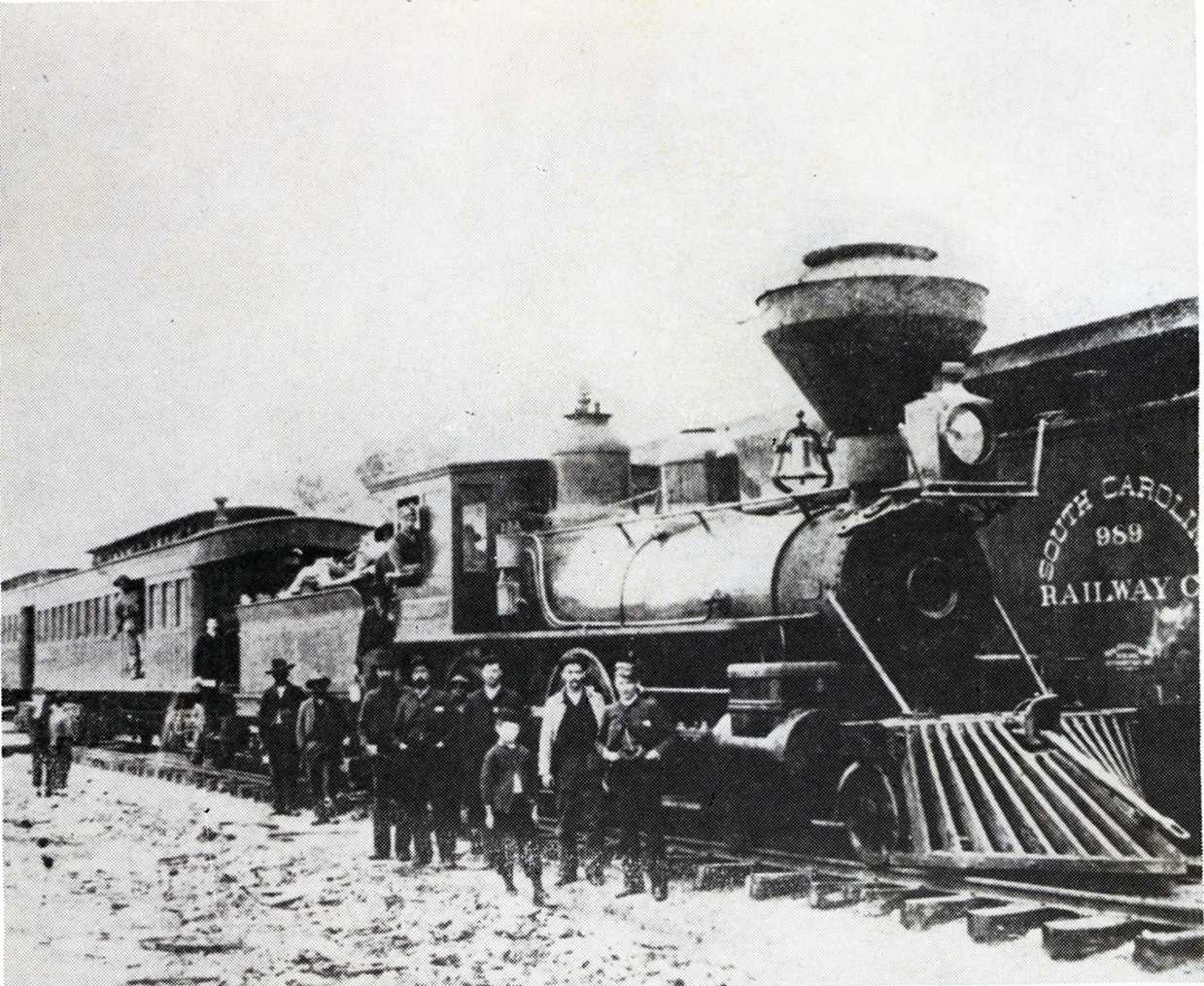

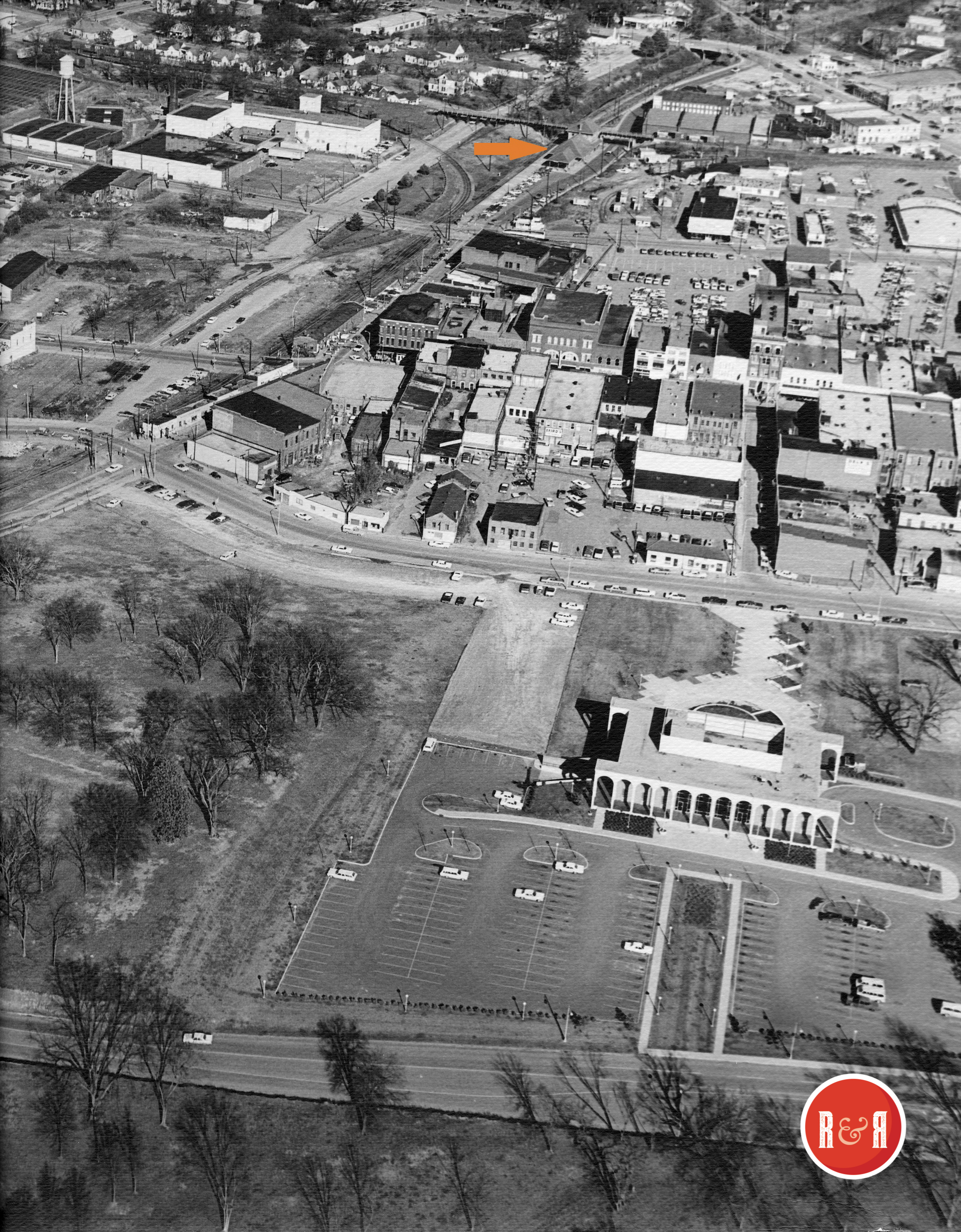
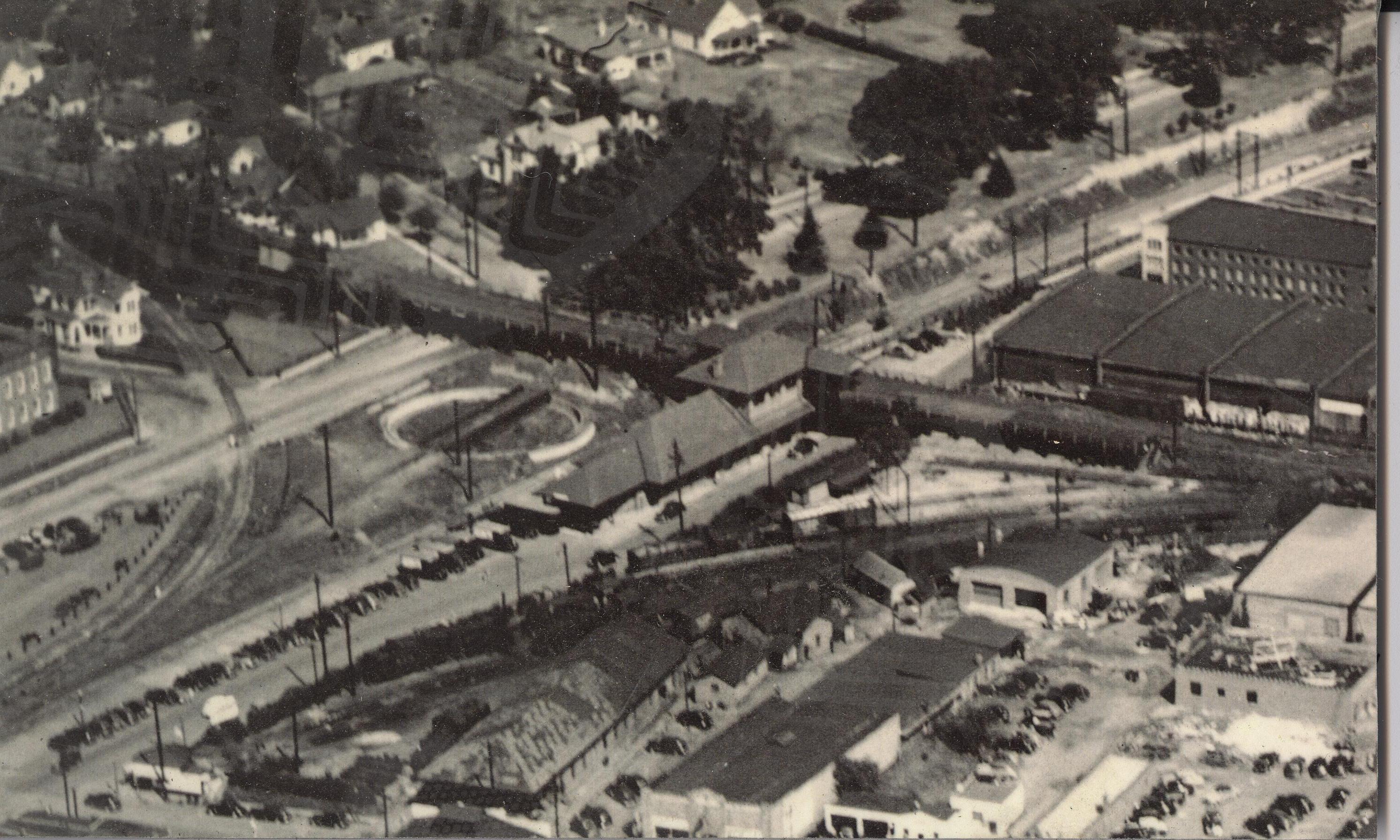
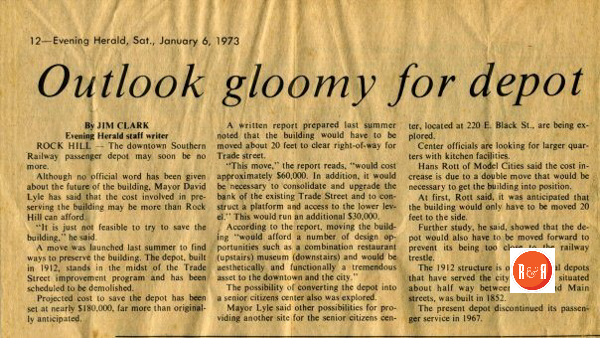
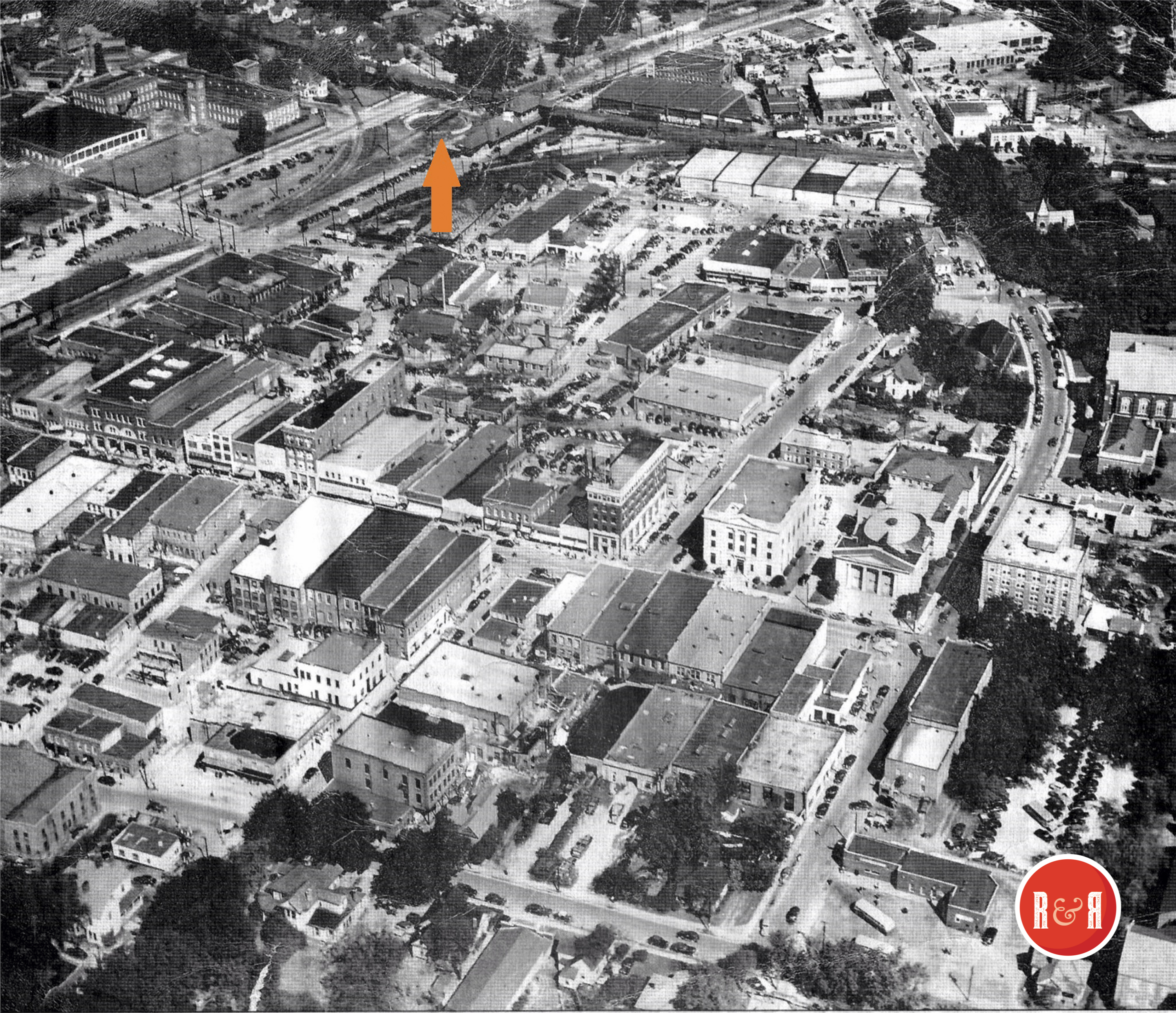


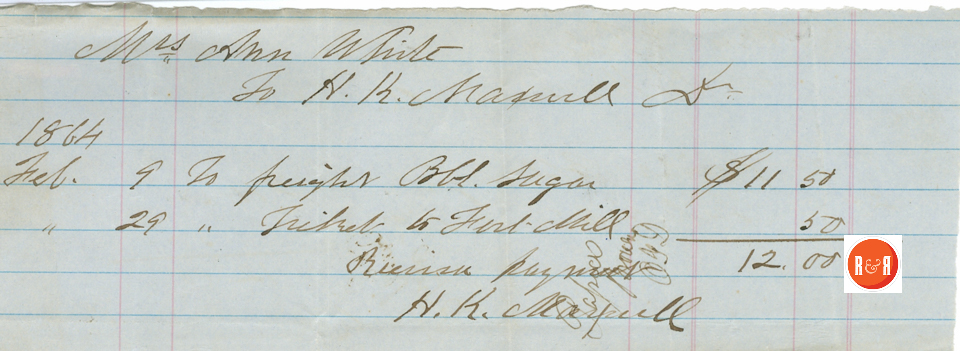







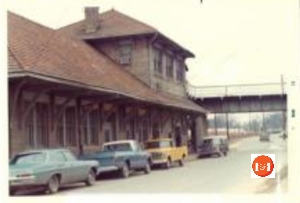


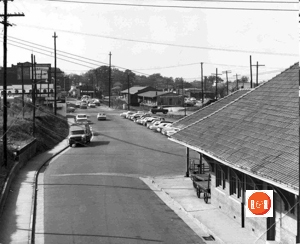
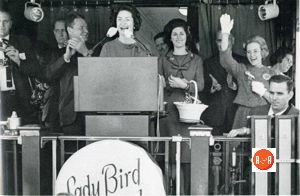












My father, Pete Chappell, and his brother won the contract for demolition of the depot in the 1970’s. Dad’s half of the “goods” became the base of a warehouse currently used on our family farm. My uncle’s half of the building’s timber rotted in the weather. It is nice to know a bit more about the history of the depot and I am thankful that a little bit of it was repurposed and remains to this day. I first became aware of the history of our warehouse when my dad and I watched a show in 2007 hosted by Betty Jo Rhea about the history of Rock Hill. He passed away soon after.
My Grandparents lived in Rock Hill and we often visited them from Charlotte in the 1950’s. My sisters and I always looked forward to our Grandfather taking us to the train station on Sunday evenings to see the train come in. That train station was a tremendous highlight of my childhood! I loved seeing those big green luggage carts with the big wheels and loved hearing the porters yell “all aboard” as they picked up their little step stools.. I felt like a family member had died when they tore it down to build Dave Lyle and I’ve never understood why either it or the road couldn’t have been relocated. Sad! I did get a brick from the rubble…. and I have a watercolor rendering of the way it used to look. What a fond memory! I have retired and now live in Rock Hill as it has always been one of my favorite places. I am hearing the train whistle right now as I am typing this.
Ms Amanda Helms and Ms Barbara Connor comment beautifully on the Roots and Recall sketch of the Ebenezerville – Rocky Hill Depot. The Roots and Recall author has captured all aspects of the Southern rail infrastructure and its contribution to the success of our South Carolina communities. From 1964 through 1970 my wife and I traveled on the Southern Railroad from Alexandria, VA to Columbia, SC; we knew the depots of VA, NC and SC well and especially the communities of Rock Hill, Chester, Winnsboro and Columbia.
John Withers Jr
I have many memories of going to the depot to see my daddy, John Hegwood, as he passed through. He worked as a railway postal clerk until all the mail was transported entirely by truck. He loved his job. The clerks would pick up and drop off mail bags at each depot. If they didn’t make a stop at a depot, there was a large hook for them to retrieve or leave the bag of mail as they went by. They sorted mail as the train proceeded on its route. My mother would always have my sister and I put on clean clothes and comb our hair so that we could take home cooked food to my daddy when he stopped in Rock Hill. All the railway postal clerks carried guns to protect the mail. When they stopped transporting the mail by rail, my daddy started working at the Rock Hill Post Office. He liked his job there, but he never forgot his days on the train.
I was born and raised in Rock Hill and lives in Williamsburg, Virginia for over 50 years. When the depot was demolished, my mother called and was in tears that the “City Fathers” made the decision to do so. It was a big mistake to destroy the ‘heritage’ of the city; which required “doing it over with enormous expenses during the new design and efforts to ‘restore’ the original town. Several Virginia towns retained their depots and re-vitalized the towns with antique shops, museums, restaurants, and business areas around the depots. As a kid, my grandfather would take me to the depot to watch the trains and enjoyed the hot dog stand on Trade Street.
I have acquired a copy of the original drawings of the depot and I had an exact scale model of the depot built for my “Rock Hill” model train layout. If desired, I can send pictures of the model depot.
Hi, You are and were not alone in your desire to retain so much of our local history. As a youngman, I was helpless in seeing Mayor Lyle and his associate Vernon Grant demolish so much of what we cherished. If you have memories of Trade St., etc. please share. And yes, we would enjoy seeing your model.
Wade@R&R.com
VERNON GRANT SPOKE AT NORTHSIDE SCHOOL ONE TIME. HE CREATED THE SNAP CRACKLE AND POP.
IN 7TH GRADE AT NORTHSIDE, MRS. ECHOLS HUSBAND A MINISTER CAME TO SPEAK WITH US. HE WAS FROM SCOTLAND. HE WORE THE OUTFIT
LIKE THEY WORE IN HIS HOME LAND–SORT OF LIKE A SKIRT.